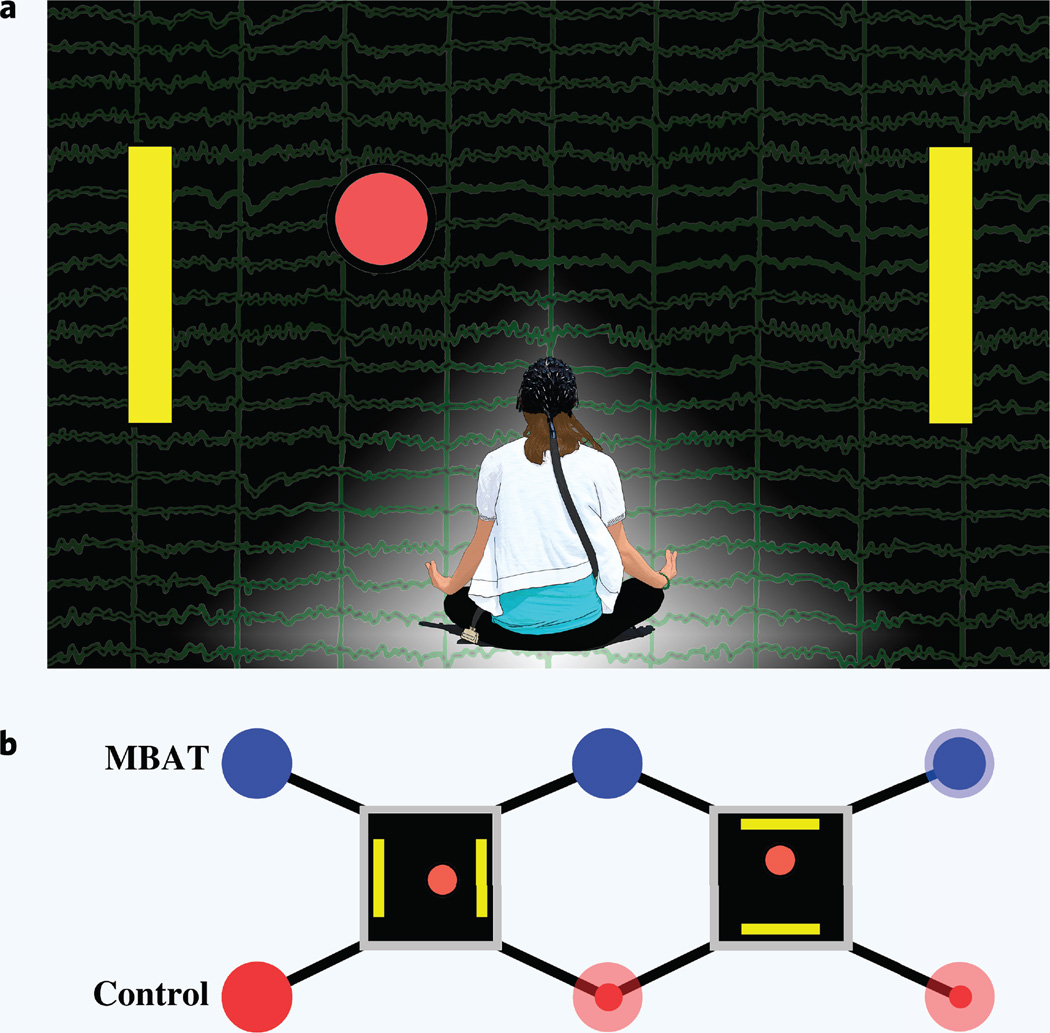Figure 1.
(a) A conceptual diagram of the study design and the potential role of mind body awareness training (MBAT) in the context of a sensorimotor rhythm based brain-computer interface (BCI). The EEG signal that is produced from motor imaginations is depicted in the background of the figure. The yellow target bars displayed on the left and right sides of the figure, in addition to the red ball in the middle, represent the standard left vs. right cursor task that is used for initial one-dimensional (1D) BCI training. (b) Experimental paradigms. Subjects belong to one of two cohorts — MBAT practitioners and controls. All subjects undergo the same task progression starting with a left vs. right cursor task. The subjects pass when they have completed the task with 80% accuracy (or higher) for four consecutive runs or if their accuracy averages 80% or higher over ten runs. Those who pass the left vs. right cursor task move onto the up vs. down cursor task with the same passing criteria. Subjects who pass the up vs. down cursor task are deemed proficient in 1D BCI control. Opaque dots on the figure represent the percentage of subjects (drawn to scale) who have passed each stage of the protocol. Translucent dots represent the original pool of subjects.

